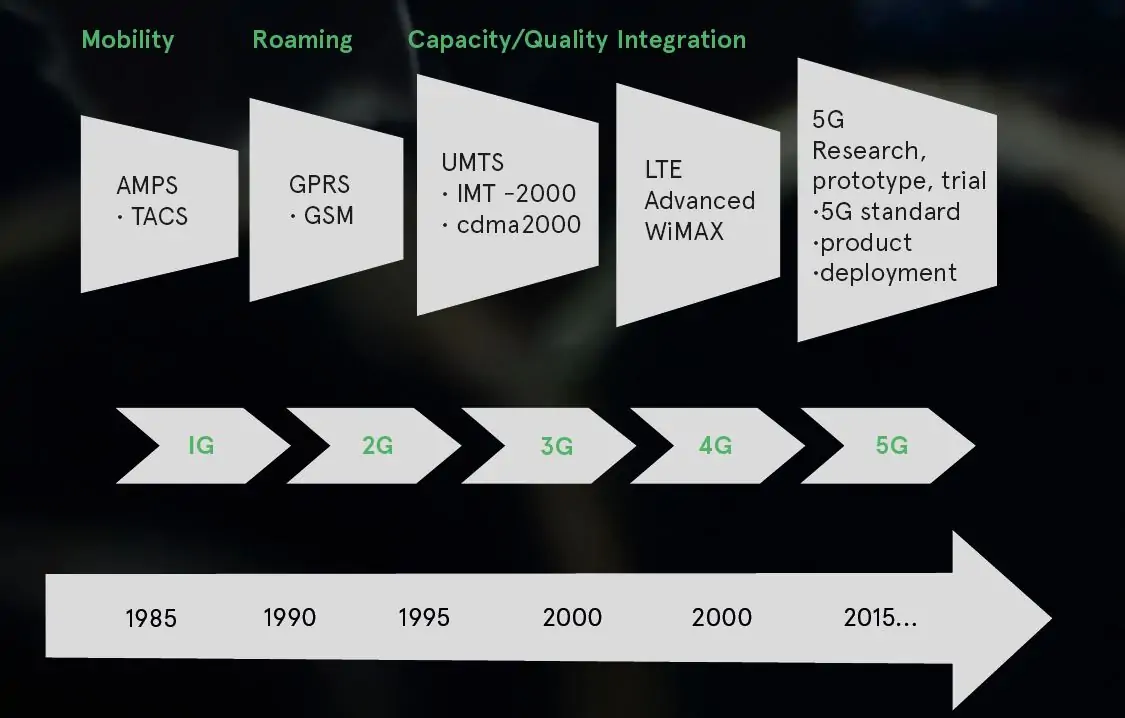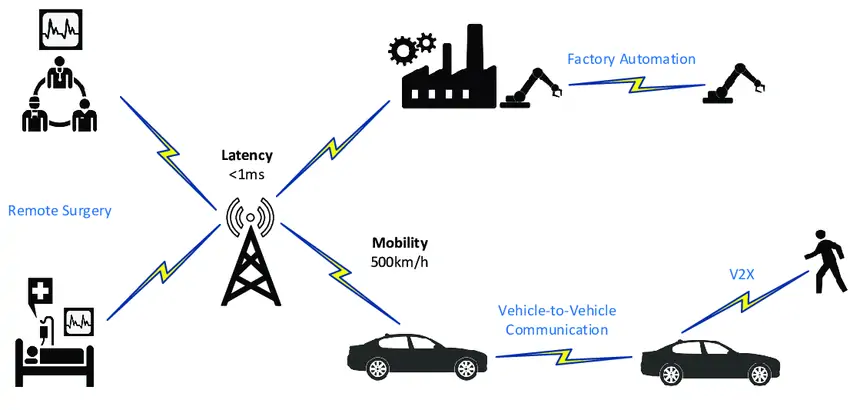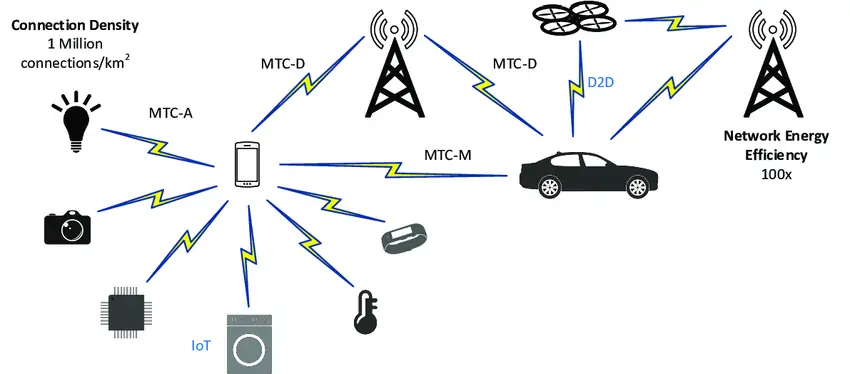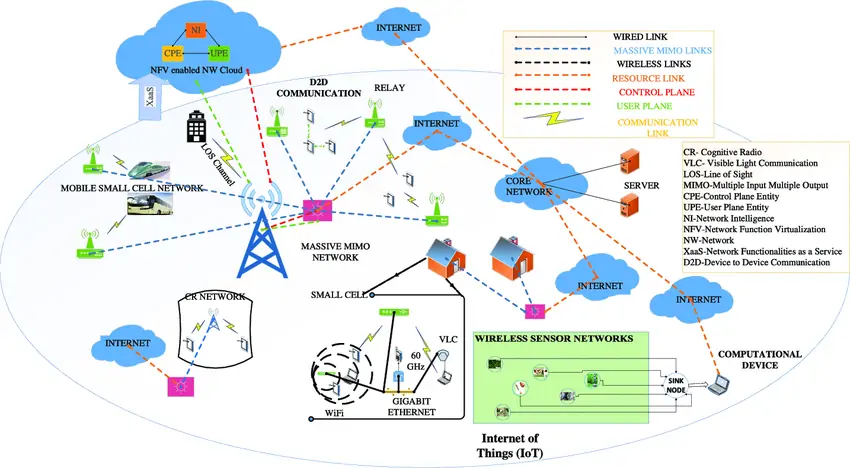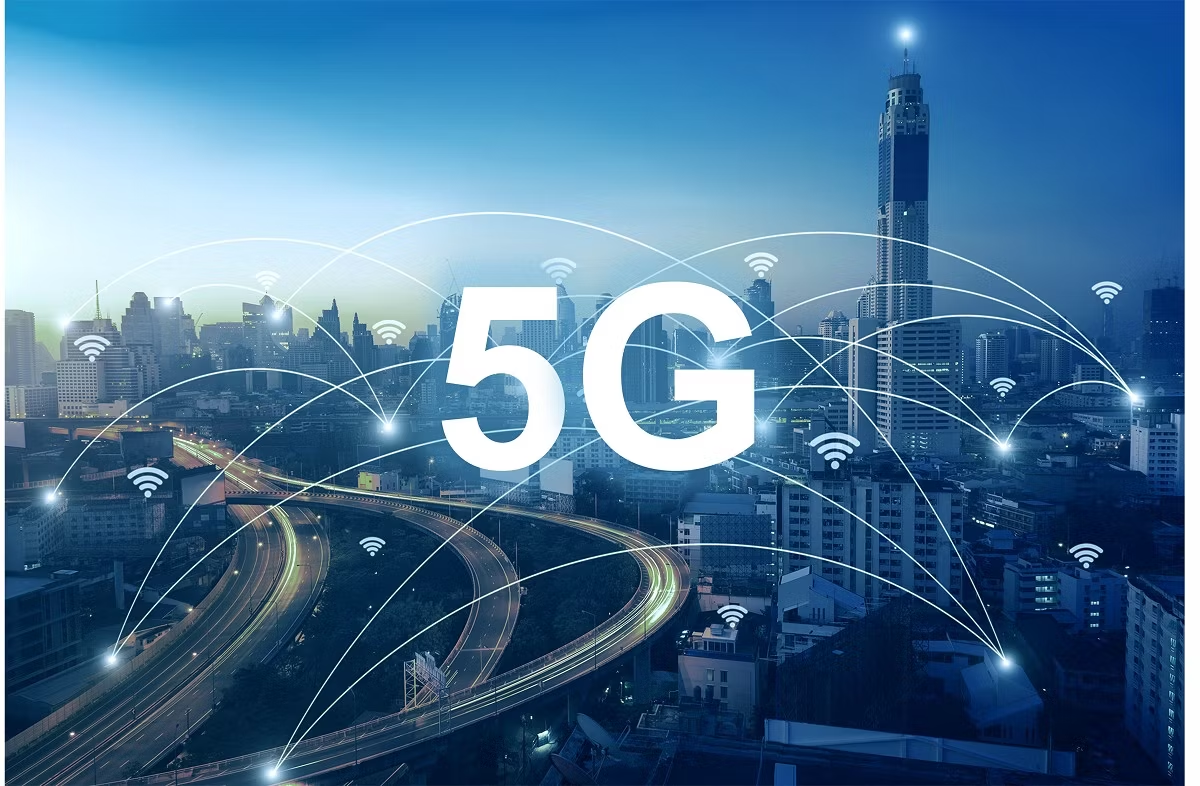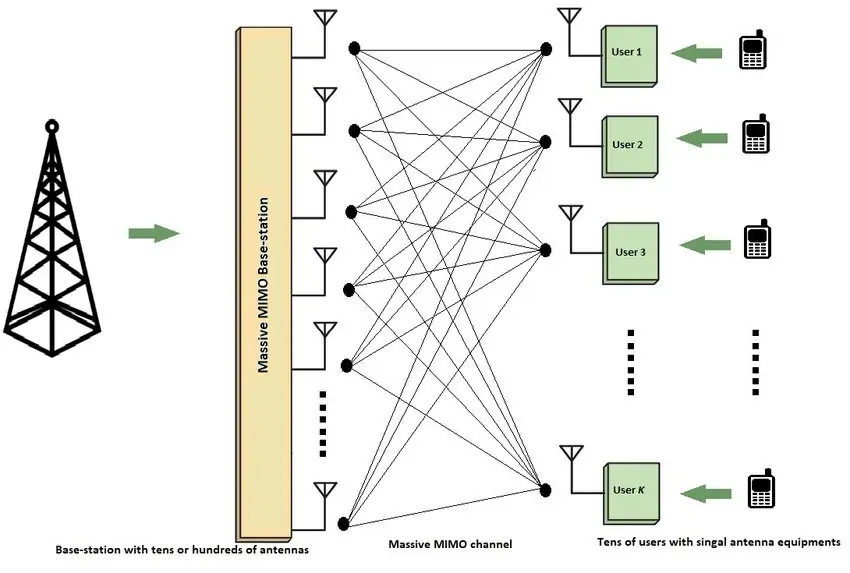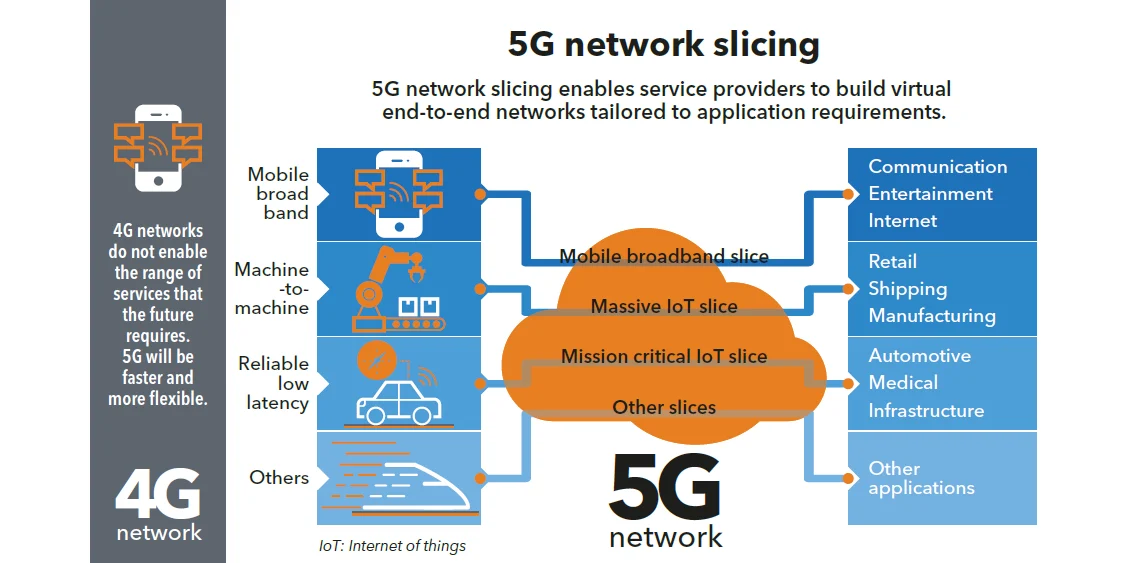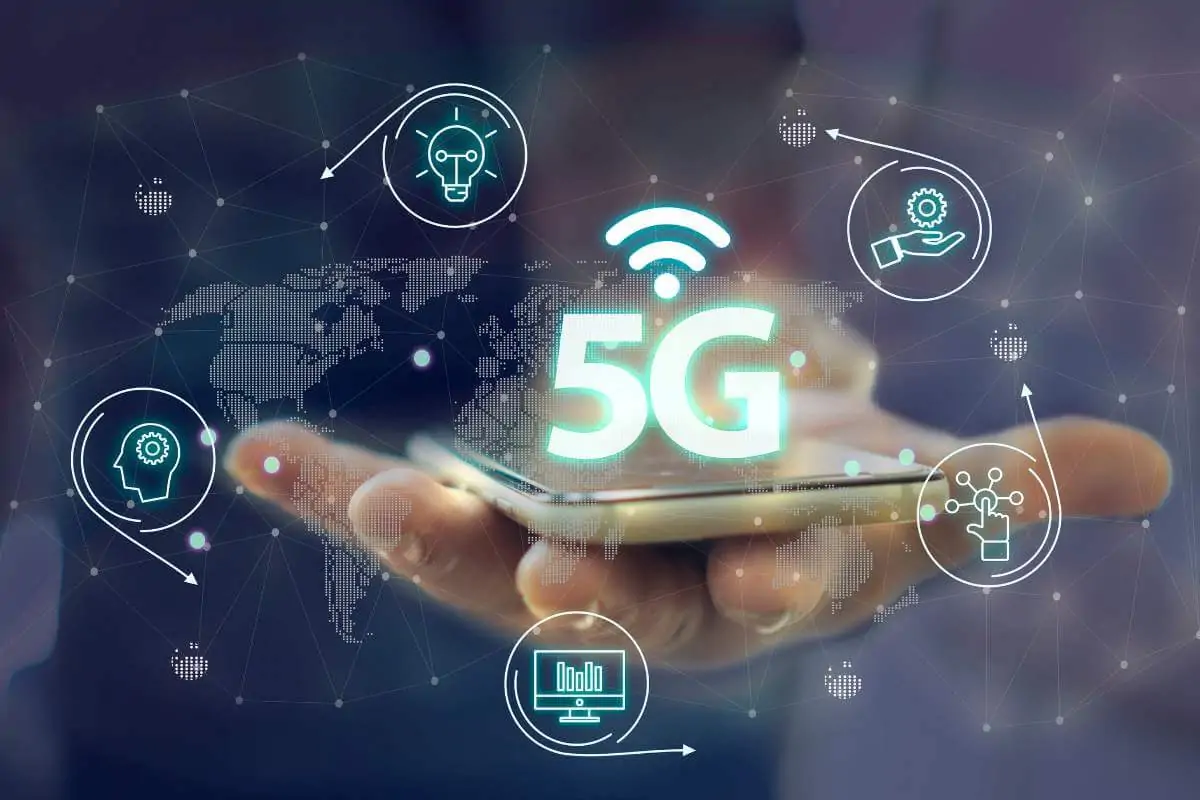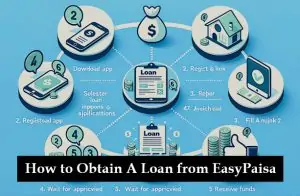5G technology, the fifth generation of mobile networks, promises unprecedented speed, connectivity, and low latency, revolutionizing mobile communication and transforming various industries. It significantly enhances mobile broadband, supports ultra-reliable low-latency communication (URLLC), and connects massive Internet of Things (IoT) devices. The implications of 5G extend beyond faster internet speeds, influencing fields such as healthcare, autonomous vehicles, and smart cities. This article explores the evolution, mechanisms, and future potential of 5G technology, highlighting its transformative impact from early mobile networks to the sophisticated infrastructure of 5G.
Historical Evolution of Mobile Networks
Early Mobile Networks (1G to 4G)
The Beginning of Mobile Communication
- The first generation (1G) of mobile networks marked the dawn of mobile communication. Utilizing analog technology, 1G was limited to voice calls and did not offer data capabilities. Despite its limitations, it laid the foundation for future advancements.
The Digital Revolution
- The second generation (2G) introduced digital technology, significantly improving voice quality and enabling text messaging (SMS). This era marked the beginning of data services, albeit at a minimal scale.
The Era of Data
- The third generation (3G) brought mobile internet access to the forefront. With improved data speeds, users could browse the web, send emails, and enjoy multimedia services on their mobile devices.
The Broadband Experience
- The fourth generation (4G) revolutionized mobile broadband with high-speed internet, enabling seamless streaming, real-time services, and advanced applications. It set the stage for the connected world we live in today.
The Transition from 4G to 5G
- The transition from 4G to 5G is driven by the need for faster data speeds, lower latency, and the capacity to connect more devices. 5G technology promises to address these needs, offering enhanced mobile experiences and enabling new applications.
Core Mechanisms of 5G Technology
Enhanced Mobile Broadband (eMBB)
5G’s enhanced mobile broadband (eMBB) significantly increases data speeds and capacity. This improvement is crucial for high-definition streaming, immersive gaming, and virtual reality (VR) and augmented reality (AR) experiences.
Key Applications
- High-definition streaming
- Buffer-free video streaming
- Enhanced video conferencing
- Immersive gaming
- Real-time multiplayer gaming
- Cloud-based gaming services
- Virtual and Augmented Reality
- Seamless VR/AR experiences
- Enhanced educational and training simulations
Steps to Leverage eMBB
- Upgrade network infrastructure to support 5G
- Develop applications that take advantage of higher data speeds
- Optimize content delivery networks (CDNs) for low latency
- Integrate eMBB capabilities into existing services
Ultra-Reliable Low Latency Communication (URLLC)
URLLC is vital for critical applications that require low latency and high reliability. Use cases include autonomous vehicles, remote surgeries, and industrial automation, where even a millisecond delay can have significant consequences.
Critical Applications
- Autonomous vehicles
- Real-time decision-making
- Vehicle-to-everything (V2X) communication
- Remote surgeries
- Precision robotic controls
- Real-time video transmission
- Industrial automation
- Automated machinery coordination
- Real-time monitoring and control systems
Steps to Implement URLLC
- Ensure network infrastructure supports low latency and high reliability
- Develop applications that require URLLC capabilities
- Conduct rigorous testing for latency-sensitive applications
- Integrate URLLC with existing critical systems
Massive Machine Type Communication (MTC)
Massive MTC enables connectivity for a vast number of IoT devices. This capability is essential for developing smart cities, precision agriculture, and efficient logistics, where numerous devices must communicate seamlessly.
Key Use Cases
- Smart cities
- Smart lighting and traffic management
- Enhanced public safety systems
- Precision agriculture
- IoT-based crop monitoring
- Automated irrigation systems
- Efficient logistics
- Real-time inventory tracking
- Predictive maintenance for transportation fleets
Steps to Enable MTC
- Deploy a robust IoT network infrastructure
- Develop scalable IoT solutions
- Ensure interoperability among various IoT devices
- Implement strong security measures for IoT communications
Technical Mechanisms of 5G
Network Architecture
5G’s architecture consists of a core and radio access networks (RAN). The core network manages data and internet connections, while the RAN connects user devices to the network.
1. Core Network
- Manages data and internet connections.
- Handles signaling and data transfer.
- Provides services like authentication, mobility, and security.
2. Radio Access Network (RAN)
- Connects user devices to the network.
- Comprises base stations and antennas.
- Facilitates communication between user equipment (UE) and the core network.
Key Technologies
1. Millimeter Waves
Millimeter waves use a high-frequency spectrum to provide faster data rates and capacity. However, they face challenges like signal attenuation and limited range.
Advantages:
- Provides faster data rates.
- Increases network capacity.
Challenges:
- Signal attenuation.
- Limited range.
2. Small Cells
Small cells are densely packed, low-power cell towers that improve coverage and capacity in high-demand areas. They are crucial for delivering consistent 5G performance.
Benefits:
- Enhances coverage in high-demand areas.
- Increases network capacity.
- Provides consistent 5G performance.
Deployment Steps:
- Identify high-demand areas.
- Install low-power cell towers.
- Integrate small cells into the existing network.

3. Massive MIMO
Massive multiple-input multiple-output (MIMO) technology uses numerous antennas to enhance data transmission and reception, significantly increasing network capacity.
Advantages:
- Enhances data transmission and reception.
- Increases network capacity.
- Improves overall network performance.
Implementation Steps:
- Deploy numerous antennas at base stations.
- Optimize antenna configuration.
- Integrate with existing network infrastructure.
4. Beamforming
Beamforming directs signals toward specific users rather than broadcasting them widely, reducing interference and improving signal quality.
Benefits:
- Reduces interference.
- Improves signal quality.
- Enhances user experience.
Implementation Steps:
- Deploy beamforming antennas.
- Configure antennas to direct signals.
- Optimize beamforming algorithms.
5. Network Slicing
Network slicing allows virtualized network segments to be customized to different applications, ensuring optimized performance for diverse use cases.
Advantages:
- Optimizes performance for different use cases.
- Increases network efficiency.
- Enhances flexibility and scalability.
Implementation Steps:
- Define network segments for various applications.
- Virtualize network resources.
- Deploy and manage network slices.
Benefits of 5G Technology
Here are the benefits of 5G Technology:
- Speed and Latency: Compared to 4G, 5G offers dramatically higher speeds and lower latency. This enhancement enables real-time applications like gaming and telemedicine to function smoothly.
- Capacity and Connectivity: 5G can handle more devices simultaneously, facilitating the growth of IoT ecosystems and ensuring reliable connectivity even in crowded areas.
- Reliability and Efficiency: 5G provides improved performance in various environments, including urban, rural, and industrial settings. Its energy efficiency also supports sustainable technology development.

Challenges and Limitations of 5G
Infrastructure Development
The deployment of 5G requires extensive new infrastructure, including more cell towers and advanced hardware. This development involves significant costs and logistical challenges.
- Building New Cell Towers
- Identify optimal locations for new cell towers.
- Secure necessary permits and approvals.
- Construct and test new cell towers.
- Upgrading Existing Hardware
- Assess current infrastructure capabilities.
- Procure advanced hardware compatible with 5G technology.
- Implement and test hardware upgrades.
- Managing Costs and Logistics
- Develop a comprehensive budget for infrastructure development.
- Coordinate with suppliers and contractors.
- Monitor and manage project timelines and expenditures.
Technical Challenges
5G faces technical issues such as signal propagation difficulties and device compatibility. Overcoming these challenges is essential for widespread adoption.
- Addressing Signal Propagation Issues
- Conduct extensive field tests to identify weak signal areas.
- Implement small cells and signal repeaters to enhance coverage.
- Optimize network configurations to improve signal strength.
- Ensuring Device Compatibility
- Collaborate with device manufacturers to ensure 5G compatibility.
- Develop firmware and software updates for existing devices.
- Test and certify new 5G-enabled devices.
- Enhancing Network Performance
- Deploy advanced network technologies such as beamforming and MIMO.
- Continuously monitor and optimize network performance.
- Provide ongoing technical support and maintenance.

Regulatory and Security Concerns
Spectrum allocation, data privacy, and security are critical regulatory concerns for 5G implementation. Addressing these issues is vital to ensure safe and efficient network operation.
- Spectrum Allocation
- Participate in government and industry consultations on spectrum allocation.
- Acquire necessary spectrum licenses.
- Coordinate with other network operators to avoid interference.
- Data Privacy Protection
- Implement robust data encryption protocols.
- Develop and enforce strict data privacy policies.
- Regularly audit data privacy practices and update as needed.
- Network Security Measures
- Deploy advanced security solutions such as firewalls and intrusion detection systems.
- Conduct regular security assessments and penetration testing.
- Provide security training for network administrators and users.
Conclusion
5G technology represents a transformative force in mobile communication and various industries. Its enhanced speed, connectivity, and low latency will enable new applications and improve existing ones. Staying updated with the latest advancements in 5G is crucial as we move towards a more connected and efficient future.

